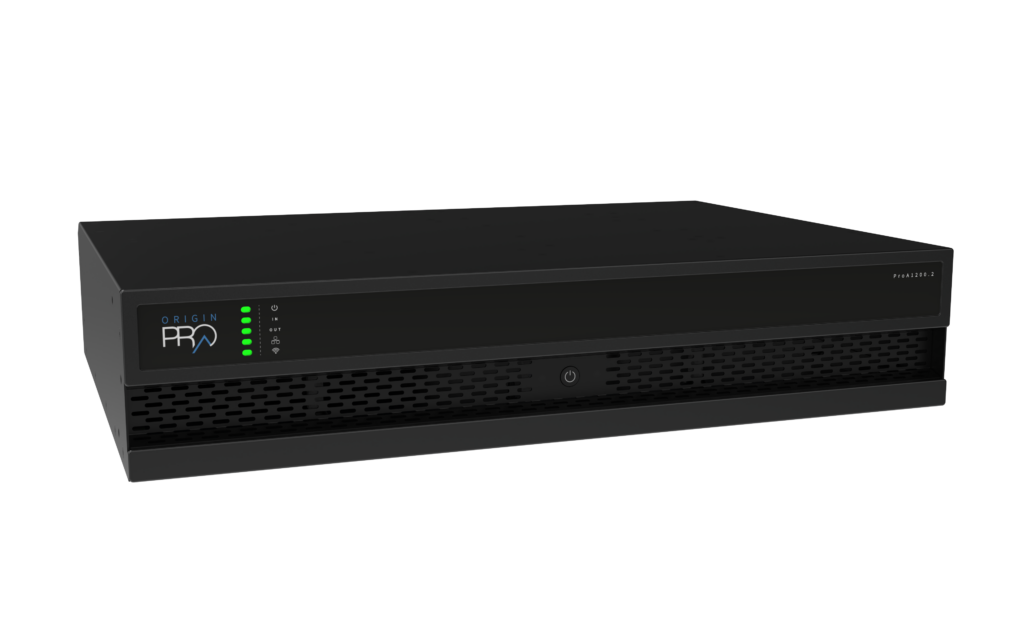Much has been made of the “resimercial” trend in the custom integration business, which sees dealers primarily operating in the residential space take on light commercial work such as restaurants, hotels, shopping venues and other commercial environments like office spaces.
CE Pro’s own research shows that lite commercial work is becoming more common in the custom integration industry, with our annual State of the Industry report published in January finding integrators earn a median of $1.1 million in revenues from a 68%/32% residential/commercial split.
However, primarily residential integrators would be hard-pressed to make the transition into “resimercial” integrators without residential manufacturers also releasing commercial products to support their customers.
In recent months, manufacturers Origin Acoustics, Access Networks, and Screen Innovations have been making the push into the commercial market, which not only supports their customers as they broaden their horizons, but also helps their business grow and future-proofs it against any downturns in the residential market.
This follows other manufactures who have made the expansion in recent years, such as audio manufacturers Bluesound and Sonance, which both launched commercial products in 2019. Additionally, companies and control companies in particular have also positioned their solutions as applicable to both residential and resimercial jobs.
The Future-Proof Commercial Market
Origin Acoustics is bringing the same feature-rich approach from its residential products to its commercial market, taking with them the technology and patents that have made Origin Acoustics a big name in the architectural and outdoor audio space.
For VP Commercial Joe Whitaker and the Origin Acoustics team, the launch of the company’s Pro line of speakers and amplifiers–Origin’s first foray into the commercial market–simply helps grow the business.

“The best way for us to grow is going to be through the commercial and pro market,” Whitaker says.
Inflation, fears of a recession and hints of a similar housing market crash have led to just a bit of hesitation in the residential market, although Whitaker says the residential space really hasn’t slowed down at all.
However, what happened to the housing market in 2007 is still fresh in the minds of manufacturers that serve high-end residential installations.
“We’ve been around long enough that we experienced the housing market crash,” Whitaker says. “For those of us that had integration companies or manufacturers, the only reason they stayed alive was that entrance into commercial.”
While Origin Acoustics is still bullish on the residential market, things often change quickly based on macroeconomic factors and headwinds. However, what remains is the fact that the commercial market is a safety net for integrators and manufacturers in the technology space.
In addition, any successful company is always looking for growth, and due to its success in the residential market, Origin is setting its sights on growing its business by expanding to new markets.
A Different, More Lucrative Approach
Similar to Origin Acoustics, Screen Innovations is another manufacturer to recently make entry into the commercial market.
Blake Vackar, screen evangelist with the Austin, Texas-based manufacturer of projection screens and shade solutions, says the company began focusing on the commercial market around 2018, but didn’t truly understand it until 2020.
The company’s trajectory into the commercial market is the opposite of most screen companies, who began in commercial then expanded into home theater.
For Vackar, the biggest benefit about the commercial market is simply the size of projects. Most home projects typically have just one home theater, which of course requires just one screen.

“When you have 200 screens on one order, you get less excited about one screen in a home,” Vackar says.
The approach to commercial is much, much different than the residential space. In the CEDIA home theater channel, homeowners are spending their own money on a very emotional purchase for something that they will spend an intimate amount of time with.
In the commercial world, there’s a team of executives and board members making the purchases, typically looking for the best bang for their buck and a higher level of performance.
Screen Innovations has recently made waves with CarbonBlack, a new series of screens designed for large venues that rival the brightness, depth and clarity of LED video walls at a much lower cost, with sizes up to 16 feet by 99 feet and a 160-degree viewing cone.
The screen, which is acoustically transparent, was featured in Weekends With Adele, the singer’s Las Vegas residency, which took place last year.
Now, the company has a full lineup of ambient light rejecting screens for nearly any use case, including of course home theaters, education, houses of worship, sports bars, and board rooms.
For Vackar and SI, the biggest difference in the commercial market is the quantity of products needed. In fact, one project in the early stages of development is calling for 200 170-inch CarbonBlack screens in one sale.
“That’s more than a week’s worth of residential sales,” Vackar says.
Resimercial Design Treats Commercial Spaces Like High-End Homes
In the residential sector, it’s common for a homeowner to work with an architect, who then works with integrators and manufacturers to complete the project. However, commercial projects haven’t historically come together that way.
Now, interior designers are getting more involved in commercial projects, which is a familiar process for the integrators and manufacturers serving those high-end residential customers.
Imagine a lobby of a modern hotel, corporate office, or restaurant. The design and architecture are very reminiscent to that of a high-end home than any commercial space.
“It’s much more lifestyle now than it used to be,” Whitaker says. “It’s a lot more pretty and more inviting. Those are the things we already know and can do with our design-centric technology.”
Essentially, it’s no longer just about the quality of the audio or video components in commercial spaces. It’s now about the whole experience, which comes from the residential market.
“We were already a couple steps ahead by having figured out the residential market and really mastering it,” Whitaker says.
Other Market Factors Add to Appeal
Access Networks, the networking brand of Snap One, is also increasing its presence in the commercial market, expanding its commercial outreach through focused business, marketing, and sales initiatives.
Snap One’s Vice President of Managed Services Bryce Nordstrand says several factors are presenting greater opportunities for commercial projects, including companies calling employees back to the office in the wake of pandemic-induced remote work, businesses looking to enhance cybersecurity, hospitality establishments integrating new connected technologies, and houses of worship modernizing their facilities.
“With this expanded market focus, our goal is to help integrators build business in the commercial space by actively promoting our well-established line of high-performance, enterprise-grade networking systems as a foundational element of key commercial environments where secure, reliable, and fast connectivity is required,” Nordstrand explains.
“Access Networks has been providing exceptional Wi-Fi experiences primarily to the residential market for many years. Now, we’re extending our reach to the commercial marketplace.”
In many ways, Access Networks is the best suited primarily residential manufacturer to serve the commercial market, as the brand already offers a diverse product line of enterprise-grade products such as Wi-Fi 6 access points, multigig switches and Sophos routers and firewalls.
Snap One Commercial Market Senior Director Scott Normand says the company’s products have always provided enterprise-level performance. Now, the Access Networks and Snap One are simply putting some more muscle and energy behind it with focused sales and marketing pushes.
In prepared remarks upon the company’s announcement, Snap One’s Commercial Market Senior Director Scott Normand says there is now no meaningful difference between the networking needs and expectations of residential and commercial customers.
“Dealers who have been providing their residential customers with networking reliability, stability and performance can apply the same solutions to deliver exceptional connectivity to small- and medium-size businesses, hospitality venues, and houses of worship,” Normand emphasizes.
“There’s never been a better time for Partners to expand into commercial projects, and Access Networks’ enterprise-grade networking solutions, coupled with Snap One’s new focus on this sector of the systems integration industry, are geared to streamline the transition for our Partners.”







